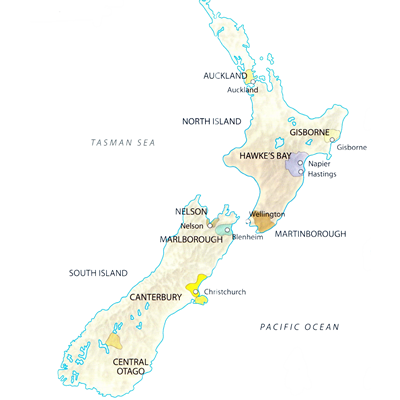*Oferte personalizate pentru evenimente. Contactați-ne!
+40 720 050 000
SCHEDULE DECEMBER 2025 - JANUARY 2026
December 24 - 28 closed
December 29 - 30 normal schedule
December 31 - January 7 closed
Thank you for understanding!

Argentina
Argentina has a long history of wine producing dating for more than 450 years, when vines brought from Chile in Santiago del Estero - Northern Argentina, were planted in the province of Mendoza. Currently, it is the fifth biggest wine producer in the world, with a very strong private consumption rate, combined with an internationally growing demand.
Australia
The Australian wine industry is the world's fifth largest exporter of wine with approximately 780 million litres a year to the international export market with only about 40% of production consumed domestically. The wine industry is a significant contributor to the Australian economy through production, employment, export and tourism. Wine is produced in every state, with more than 60 designated wine regions totalling approximately 160,000 hectares; however Australia's wine regions are mainly in the southern, cooler parts of the country, with vineyards located in South Australia, New South Wales, Victoria, Western Australia, Tasmania and Queensland. The wine regions in each of these states produce different wine varieties and styles that take advantage of the particular Terroir such as: climatic differences, topography and soil types. The major varieties are predominantly Shiraz, Cabernet Sauvignon, Chardonnay, Merlot, Semillon, Pinot noir, Riesling, and Sauvignon blanc.

Austria
Austria is enjoying a renaissance as a wine-producing nation. It has worked its way free from decades-old controversy caused by a careless few, and has emerged as a role model for modern European wine – a leader in quality and innovation. Balancing the traditional with the modern, the Austrian wine industry has retained such classics as sweet Ausbruch and Strohwein, while actively developing modern, consumer-friendly wines such as its signature style: crisp, white, aromatic Gruner Veltliner. Officially, 35 grape varieties are permitted for use in Austrian quality wine, of which almost two-thirds are white-wine varieties. In terms of volume, Gruner Veltliner is by far the most important, followed by Riesling. The finest wines made from these two varieties come from the famous Wachau, Kamptal, Weinviertel and Kremstal regions. Austria wines also follow the Districtus Austriae Controllatus (DAC) appellation system, introduced in 2003. In a similar way to the AOC classification in France, the DAC wine laws impose certain constraints covering permitted grape varieties, alcohol levels and oak maturation regimes.

Chile
Wine production began in Chile shortly after Spanish immigrants settled here in the 16th century. However, the country remained an isolated industry of the international market for most of the 20th century. In the 1970s, the famous Spanish wine producer Miguel Torres said Chile was as a winegrowing heaven. His statement is backed by the variety of soil and climate. Starting in 1990, after the restoration of democracy, Chile’s wine industry rose, becoming known as one of the powerful producers of the New World.
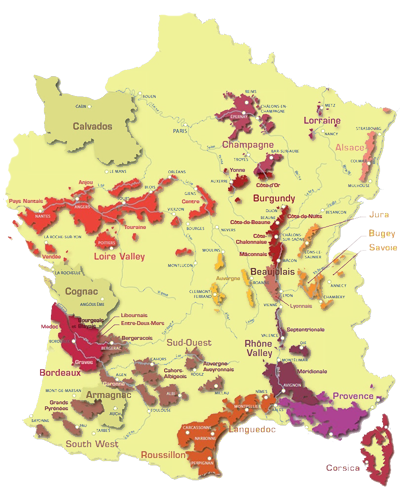
France
France can’t claim the birthplace of wine but, certainly, for a couple of hundred years it is a dominant force, being one of the leading two wine producers around the world. Is the second largest wine producer in the world in maters of volume, remaining the center of the global production of fine wines. In addition, France is also the pioneer of introduction the controlled designation of origin (AOC), draft also passed on to the other countries in Europe.
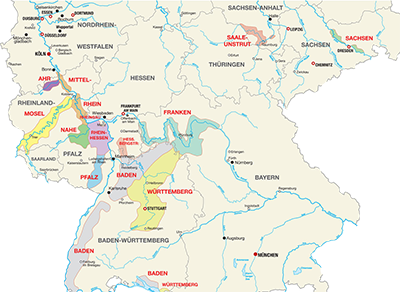
Germany
Overlooking a period of decidedly lesser glory – during the 1970s and 1980s – Germany has a long and illustrious history of winemaking. The Romans established the country's first vineyards along the banks of the Mosel, near what is now the town on Trier. By the third century AD plantings had spread to various neighboring valleys, mostly those of the Mosel's tributaries. During the Middle Ages the Christian church, particularly the Cistercian and Benedictine monasteries, was very influential in the development of wine growing and in the production of quality wine in Germany. Germany’s greatest variety, Riesling, is first documented in the Rheingau in 1435, and found its way to the Mosel shortly thereafter. In terms of volume, Germany is among the top ten countries in the world for annual wine production. A little over 60% of the wine produced is white, and there is wide agreement that the white wines from the best sites and the most reputable producers in Germany are some of the greatest in the world. Germany's red wines too are gaining in popularity and quality, especially those from Spätburgunder, the local name for Pinot Noir. The next most popular red-wine variety is Dornfelder.

Italy
Italy is one of the leading two wine producers around the world. The Greeks planted vineyards in Italy starting 800 BC, calling the country "Oenotria" or "The country of the vineyards". Until 476 AC, when The West Roman Empire was disbanded, all modern wine regions of Europe, except Bordeaux, were settled. According to the ancient texts of Old Plinius from the first century after Christ, the Romans introduced the basics of selecting parcels and grafting, things relevant till present.
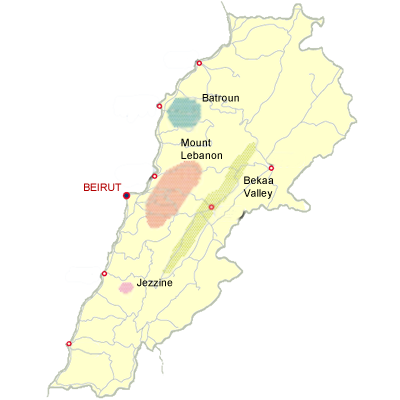
Lebanon
Lebanon produces wine for over 5000 years. In fact, historians argue that it is actually wine’s birthplace. Even the Bible says that Noah was the first wine producer, which could mean that the first wine was born in the year 3000 BC. Flavored grapes and wines appreciated around the world are the result of a smooth relief and the country's Mediterranean climate, characterized by mild winters and warm summers. Also, the Massaya vineyard in the Bekaa Valley is considered a paradise of vineyards, being the source of the most fine Lebanese wines.
Portugal
Portugal has undergone something of a wine revolution in the past couple of decades, updating its winemaking technologies, styles and attitudes. This archetypal Old World country has long been famous for little more than its fortified wines (Port and Madeira) and tart, light Vinho Verde. But it is now attracting a great deal of attention for its new wave of rich, ripe, table wines – particularly reds from the Douro Valley. Portugal's many vine varieties and their countless regional synonyms are the bane of ampelographers. Some are endemic to Portugal (e.g. Touriga Nacional), while others are shared with neighboring Spain (e.g. Tinta Roriz/Tempranillo). An increasing number are the ever-popular 'international varieties of French origin (e.g. Cabernet Sauvignon and Chardonnay). Happily, the current success of Portuguese wines has not become dependent on the latter category - a fact which has played to its favor; by retaining their indigenous grapes, Portugal's winegrowers have maintained a certain uniqueness in their wines, which is a valuable asset in the world's increasingly demanding and competitive wine market. Portugal's temperate, predominantly maritime climate has a great deal to offer ambitious vignerons.

Slovenia
Winemaking in Slovenia existed long before the Romans introduced winemaking to France, Germany and Spain; since the time of the Celts and Illyrian tribes. It's no wonder then that Slovenia has such a rich wine making history and in excess of 28,000 wineries, producing upward of 80 million litres of wine annually from its 22,300 hectares of vineyards. Roughly 75% of that production is taken up with white wine. Almost all of the wine produced in Slovenia is consumed domestically. Slovenian vineyards are located in the very centre of the European wine-growing belt. The belt of locations ideal for vineyards is similar to those in areas such as Burgundy in France, and the interlinked influences of the climate and the soil allow Slovenia to have a greater diversity in its wine offerings. No less than 52 vine varieties grow here: Rebula, Chardonnay, Sauvignon, Pinot Blanc, Pinot Gris, Malvazija, Zelen, Pinela, and Pikolit red wines, such as Merlot, Pinot Noir and Cabernet Sauvignon, Teran, Refosk.
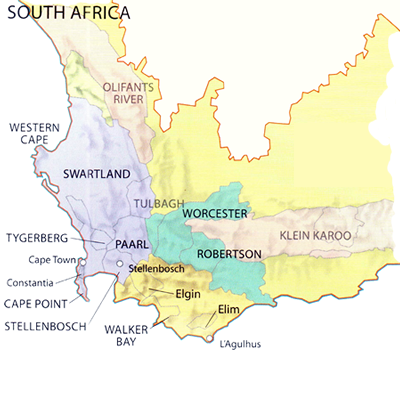
South Africa
South Africa produces wine for over 350 years with a tradition as long as many wine-producing regions in Europe. Wines here, especially the sweet wine "Vin de Constance", have been looked for and drank during past centuries. With the disappearance of the Apartheid, starting 1994, South Africa has been put in front of some big challenges in order to become competitive. Producers started working extensively in building and strengthening the country's image as a producer of quality wine.
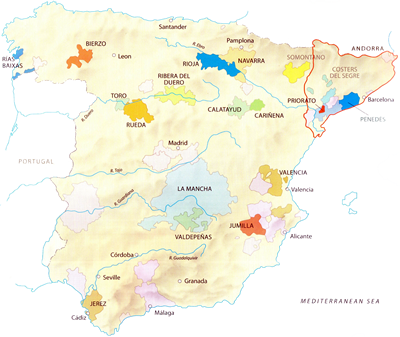
Spain
Spain has a long history in producing wines, dating from Roman times when Iberia was an important supplier for Rome itself. With its entry into the European Union, in 1986, major changes started with regard to production, and modernization was done quickly, both at the level of vineyards and in cellars, and also in the legislation.
United States of America
Wine is produced in every state of America, however there are just five states where the wine industry plays a significant role - California, Oregon, Washington, New York, and Virginia. Winemaking in America was established by early European colonists. It was greatly shaken by Prohibition in the 1930s, which saw the ripping up of many prized vineyards end. It was not until the 1960s that a number of pioneering winemakers began to show the world what America could do. The United States has confidently come of age as one of the world's top wine-producing nations. Its reputation may be founded on the global fame of Napa and Sonoma, but the U.S. is home to countless lesser-known wine regions producing world-class wines (obvious examples include Oregon's Willamette Valley and the New York Finger Lakes). Wine has been made in The States for around 400 years, but it is only in the last 40 that American wine really began to earn respect on a global scale. The U.S. is now the world's fourth-biggest wine-producing nation (behind France, Italy and Spain) and produces roughly 18.5 million hectoliters each year.

